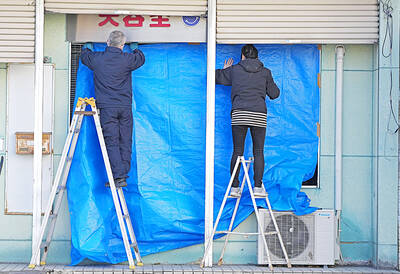A government-sponsored project has successfully developed technologies involving advanced information storage standards, which is more user-friendly to interactive media information receivers, the National Science Council announced yesterday.
Dozens of researchers from the Communication and Multimedia Laboratory at National Taiwan University (NTU) yesterday demonstrated their research results at a press conference held by the council.
By having only a digital image of a friend (the target), researchers said, a user can within seconds retrieve all digital pictures of the target from a database containing thousands of pictures by using powerful international-standard software developed by the Moving Picture Experts Group (MPEG).
MPEG developed the Emmy Award-winning software known as MPEG-1 and MPEG-2, which are used in VCD and DVD format respectively, for information storage. MPEG-4 and MPEG-7, later versions which ensure a better media-storage performance, were accepted worldwide in 1998 and 2001.
MPEG-4 is applied in the fields of digital television, interactive graphics applications and interactive multimedia. It provides standardized technological elements that enable the integration of the production, distribution and content-access paradigms of the three fields.
According to Wu Ja-ling (
"Our new technologies aim to create a coordinate framework integrating both the service provider and receiver," Wu said.
Other results include software that edits TV news pieces into more concise segments, software making virtual sculptures and a scalable-coders application, which coordinate information transmission between a service provider and receivers.
Wu said that the university's achievements attracted several foreign firms at the MPEG-4 Industry Forum last year and this year.
Tsay Chung-biau (
NTU will officially host a public exhibition of all the research results next Monday at its Department of Computer Science and Information Engineering.

Taiwanese were praised for their composure after a video filmed by Taiwanese tourists capturing the moment a magnitude 7.5 earthquake struck Japan’s Aomori Prefecture went viral on social media. The video shows a hotel room shaking violently amid Monday’s quake, with objects falling to the ground. Two Taiwanese began filming with their mobile phones, while two others held the sides of a TV to prevent it from falling. When the shaking stopped, the pair calmly took down the TV and laid it flat on a tatami mat, the video shows. The video also captured the group talking about the safety of their companions bathing

US climber Alex Honnold is to attempt to scale Taipei 101 without a rope and harness in a live Netflix special on Jan. 24, the streaming platform announced on Wednesday. Accounting for the time difference, the two-hour broadcast of Honnold’s climb, called Skyscraper Live, is to air on Jan. 23 in the US, Netflix said in a statement. Honnold, 40, was the first person ever to free solo climb the 900m El Capitan rock formation in Yosemite National Park — a feat that was recorded and later made into the 2018 documentary film Free Solo. Netflix previewed Skyscraper Live in October, after videos

Starting on Jan. 1, YouBike riders must have insurance to use the service, and a six-month trial of NT$5 coupons under certain conditions would be implemented to balance bike shortages, a joint statement from transportation departments across Taipei, New Taipei City and Taoyuan announced yesterday. The rental bike system operator said that coupons would be offered to riders to rent bikes from full stations, for riders who take out an electric-assisted bike from a full station, and for riders who return a bike to an empty station. All riders with YouBike accounts are automatically eligible for the program, and each membership account

A classified Pentagon-produced, multiyear assessment — the Overmatch brief — highlighted unreported Chinese capabilities to destroy US military assets and identified US supply chain choke points, painting a disturbing picture of waning US military might, a New York Times editorial published on Monday said. US Secretary of Defense Pete Hegseth’s comments in November last year that “we lose every time” in Pentagon-conducted war games pitting the US against China further highlighted the uncertainty about the US’ capability to intervene in the event of a Chinese invasion of Taiwan. “It shows the Pentagon’s overreliance on expensive, vulnerable weapons as adversaries field cheap, technologically